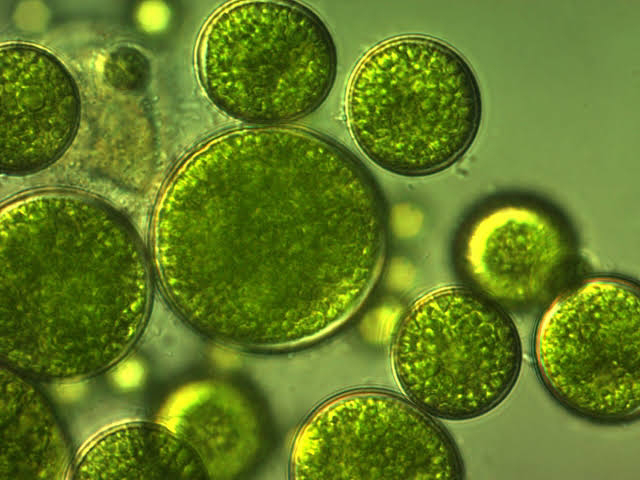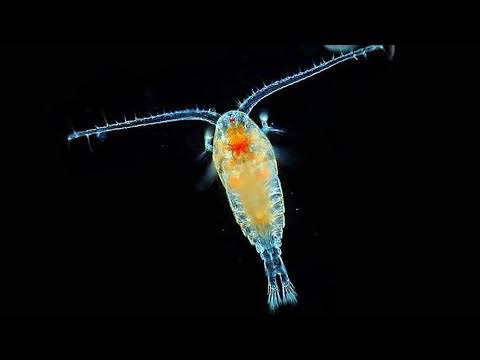Furthermore, overheating due to artificial or natural illumination should be avoided in microalgal culture. To maintain planktonic copepods in the hatchery or aquaculture ponds, a continuous supply of their diet, particularly the microalgae, will definitely be required.
1.2. Production of microalgae is mandatory in the hatchery as it is a basic and nutritious diet for live feed, specifically the zooplankton. This new species is found in abundance in eastern Thailand water and has yet to be determined for its potential in aquaculture. dengizicus (Lepeshkin), A. Live feeds, as the starter diet in larval rearing and fry production must be continuous in supply. Maintaining local species is hypothesised to be more economical and practical. First, the process involves exposure of cells to high gravitational and shear forces deteriorating the cell structure with the leaking of nutritional contents. These factors are inter-connected and always incur a synergistic effect on the issue of sustainability. They improved the quality of the cultured organism, particularly the larval stages. Concentrates of Chaetoceros muelleri and Tetraselmis pseudonana refrigerated for 6 weeks at 4°C were found to promote similar survival rates of the tiger prawn Penaeus monodon larvae fed with live microalgae [37]. This chapter aims to discuss the possible ways to produce local live feeds, a marine microalgae species and a planktonic copepod, sustainably using a simple technique for larval-rearing purposes. Macrosetella gracilis, a planktonic harpacticoid copepod, is also reported to have better diet quality when compared to Artemia [13].
Despite these positive findings, rotifers and Artemia continue to be the live feeds of choice in commercial hatcheries, because copepods are not currently cultured at sufficient densities to be economically efficient on a commercial scale [14, 15, 16]. There have been many species suggested or tested for their potential as live feed. As for Apocyclops panamensis, there is a report on a successful technique for outdoor ponds [15]. Similarly, rotifer have poor nutritional value and are small in size [3]. The fluctuation in salinity, pH and temperature in the culture vessel would definitely influence the reproduction and population growth of copepods such as the harpacticoids if kept in small containers [18]. On the other hand, copepod diets were proven to increase the growth of larval marine fish compared to diet of rotifers Brachionus plicatilis, [4,5] or Artemia [4]. Previous studies have observed the excellence of ultrafiltration technique in preserving and retaining the cellular structure and properties of fragile algal cells with little loss of material [42, 43].
The level of natural resources exploitation for aquaculture purposes is commonly high. Nonetheless, it is reminded that copepods could be better used as supplement rather than a sole diet in larval rearing, unless they are used for some high-valued commercial reef fish due to the high operation cost [9]. royi (Lindberg), and A. A new species, Apocyclops ramkhamhaengi, has been described [21] and added to the present report of 3 species of Apocyclops recognised from Asia: A. The species reported in abundance and potentially exploited as live feeds for shrimp post-larvae in Malaysia for example is A. The duration of illumination can be varied where photosynthesis of microalgae can be enhanced or increased in the light/dark (LD) cycle (usually 12:12 or 14:10 LD, maximum 16:8 LD). It has been documented that most of the demand for mariculture feed in Japan is supplied with live and fresh microalgae which is thickly concentrated and readily stored at 2-4ºC for 1-8 weeks with good shelf life [39].
Preparation of concentrated condition of microalgae usually involves centrifugation technique. The possibility of using copepods, particularly the harpacticoids as alternative live feed in fish larval rearing has been stressed [10] and it is confirmed that the nutritional quality of harpacticoid copepods as live feed is extremely high [11,12]. dengizicus. They need a ready-made diet with readily available nutrient to be absorbed through their digestive system. The superiority of copepods over other live feed such as brine shrimp and rotifers was further confirmed [7]. However, its mass production is generally costly due to huge manpower, space requirements and operation which usually related to the cost of the energy used. Planktonic copepods such as cyclopoids feed on other plankton including planktonic microalgae. Artemia sp. They have the appropriate ratio of docosahexaenoic acid (DHA) to eicosapentaenoic acid (EPA) which will improve the growth and survival of fish larvae if compared to the conventional live feeds [8]. At a higher volume, light intensity must be increased to enable it to penetrate through the culture. Coastal land and mangroves forests always become the target area for brackish-water aquaculture ponds. Nonetheless, a strategy to produce harpacticoid in large quantities for hatchery use by using a tray-culture method has been suggested [19].
Another copepod group, a Cyclopoida, Apocyclops dengizicus was found to increase the survival and growth of Panaeus monodon postlarvae when used as live feed [20]. Dependency on imported sources of live feeds or inert feed will increase the production cost. Good, nutritious and compatible-size prey must be able to reproduce fast to meet the requirement and adaptable to a simple mass-production technique.
1.1. All test animals were mostly zooplankton in nature and must meet the requirement as live feed. Microalgae
Microalgae are a diverse group of unicellular autotrophs inhabiting almost all aquatic water bodies. The illuminations also affect the nutrient utilisation in the culture vessel [32].
A cost-effective and nutritionally-adequate alternative to costly maintenance of live microalgae is the production of moist-microalgae concentrates. Supplementation of microalgae concentrates to bivalves, oysters and scallops have also recorded the same extent of growth rates as live microalgae [38,34]. The water source of this area, which is always from the nearby river estuary and lagoon, is also used as the live feeds (zooplankton and microalgae) source. They must be in a compatible size with the mouth size or gape of the larvae predator, or they cannot be swallowed. Information on the use of copepods in aquaculture, particularly from the tropical Apocyclops sp., is still scarce. For some microalgae, photosynthesis rate could also be increased exponentially with increasing light/dark frequencies where a longer period of dark in relation to the light period can further increase photosynthetic efficiencies but not vice versa [31]. Thus, the continued activity of screening, stocking and maintaining some local species as an option for live feed production is economically necessary.
Live feeds are an important basic diet for newly-hatched fish and shrimp larvae as they still have an incomplete digestive system and are lacking in enzymes. In term of culture condition, it was found that the optimum condition for the high production of a tropical harpacticoid copepod, Pararobertsonia sp., was at salinity 35psu and temperature of 25oC [17]. Second, centrifuging large volumes of cultures is time-consuming and requires expensive equipments. A good strategy in manipulating the culture environment, particularly during the production process of microalgae would scale down the operational cost.
Light plays a fundamental role in the development of microalgae through photosynthesis. Juvenile pacific oyster (Crassostrea gigas) fed with different algal pastes had shown significant improvement in growth rate than oyster fed with other diets [36]. The potential use of copepods as live feed due to their excellent fatty acid content has been highlighted by using an example, a paracalanid [6]. is deficient in polyunsaturated fatty acids (PUFAs), thus it needs to be enriched before feeding [1, 2]. Light may either be natural or supplied by fluorescent tubes giving the maximum effective radiation which can be absorbed by the pigments of the microalgae. It is one of the major environmental factors which control the performance of microalgae phototrophic growth and productivity [24, 25, 26]. The most often employed light intensity is 1000 lux which is suitable for Erlenmeyer flasks but 5000-10000 lux is needed for a greater volume of microalgal culture [29, 30]. The most important role of a prey is the ability to supply energy and other nutrients which are essential for the larval survival and growth. Chapter sections
1. However, an extreme light intensity may result in photo-inhibition which reduces the photosynthetic rates and growth [27,28]. Copepods as live feeds
The conventional live feed, brine shrimp and rotifers, are considered unsuitable as live feed if compared to copepods in term of nutritional value. Microalgae are rich in many specific and attractive compounds [22] and their nutritional values for aquaculture had been highlighted [23]. Light intensity plays a vital role, but the requirements vary with the culture depth or volume as well as the density of the algae in the culture. Since larvae are still weak to track down the food, the wave created by the prey will be a great help, thus ‘active’ swimming prey is preferred. It is seen to simplify hatchery procedures and has shown promising potential in the aquaculture industry [33,34].The storing of microalgae concentrates in moist form under low temperature can preserve their high nutrient composition and excellent cell viability [35,33]. Cyclopoids are omnivorous, and can be fed a mixture of feeds, mainly phytoplankton or a combination of phytoplankton, yeast or other feeds [7]. Nonetheless, although this technique has been successfully applied and utilised for preparing microalgae concentrates, it poses some limitations. The usage of the microalgae as an enrichment element for live feed copepods will be proved. Several alternative procedures, less damaging to the cells, which can be applied are filtration [40], foam fractionation [41] and flocculation [33, 34, 38]. They are still at a very young stage to generate their own required nutrients or convert them from any pre-cursor obtained from a diet. Nonetheless, the supply is always seasonal and could become unavailable unexpectedly due to many factors and natural phenomena. Introduction
Sustainability in the aquaculture industry depends on several factors including the minimum production cost in comparison to the yield, unexpected environmental conditions which affect the farm and practices in the farm management itself. Live feeds as the fundamental needs for larval rearing and fry production have to be prioritised for sustainable farming activity. borneonensis (Lindberg).












0 Comments